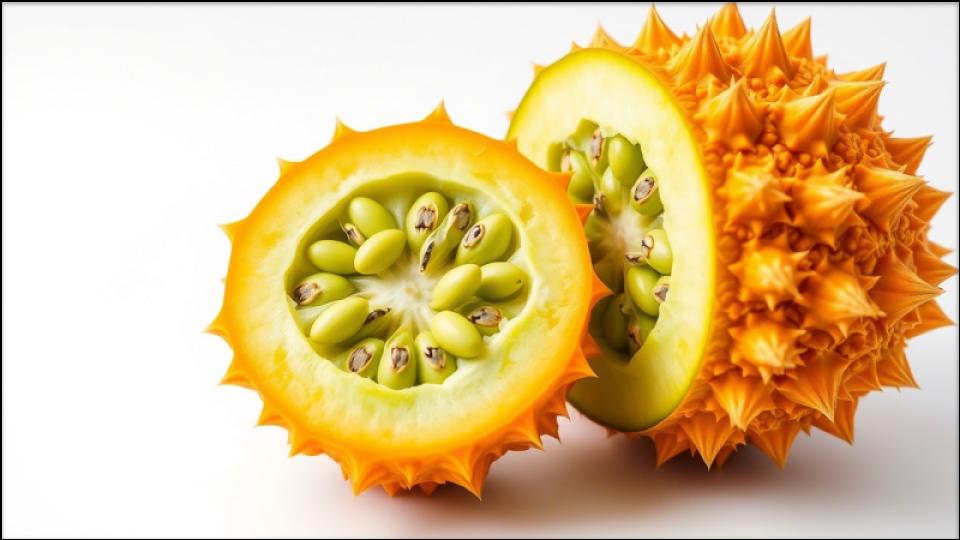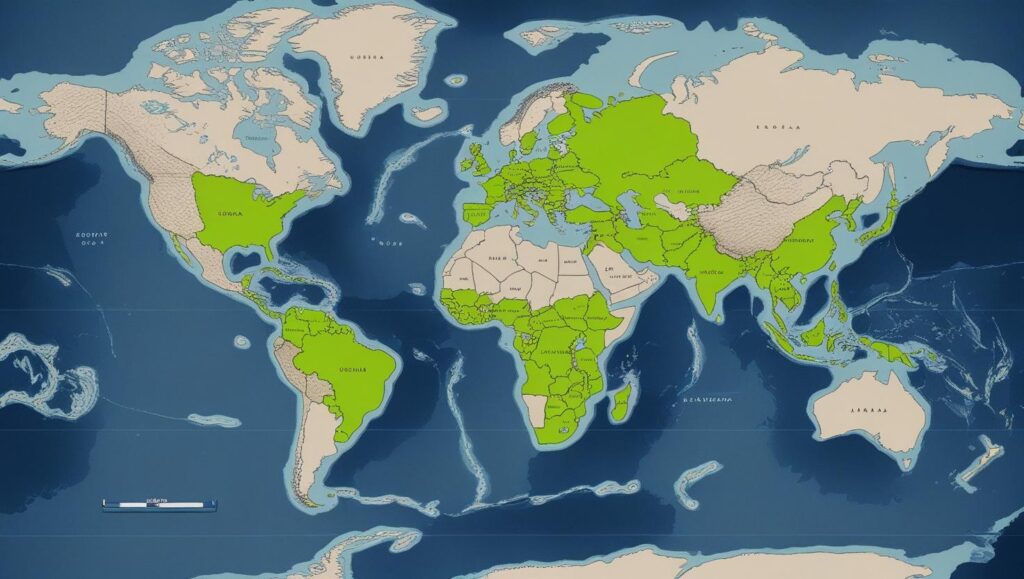While New Zealand stands as the principal commercial force for international markets, the question of which country is the largest horned melon producer reveals a more complex global picture. The fruit, native to Africa, sees its highest overall production volumes on its home continent, particularly in Ethiopia. However, New Zealand has successfully dominated the export trade through strategic branding and advanced horticulture.

Who is the World’s Largest Horned Melon Producer?
| Key Fact | Detail |
| Top Commercial Exporter | New Zealand pioneered the commercial cultivation and global export of the horned melon, marketing it under the trademarked name “Kiwano.” |
| Origin & Volume Leader | Ethiopia and other Sub-Saharan nations are believed to produce the largest total volume, primarily for local consumption and traditional use. |
| Botanical Name | Cucumis metuliferus, a member of the cucumber and melon family (Cucurbitaceae). |
| Other Key Growers | The United States (California), Portugal, and Israel have established niche commercial operations for domestic and regional markets. |
New Zealand’s Commercial Dominance in Kiwano Exports
WELLINGTON, New Zealand – For decades, the global conversation about the commercial production of the horned melon, or Kiwano, has been centered on New Zealand. Although the fruit is not native to the island nation, growers here were the first to see its potential as a unique export commodity. Beginning in the 1980s, New Zealand farmers began cultivating Cucumis metuliferus, developing advanced horticultural practices to ensure consistent quality and yield for international markets.
A key part of this strategy was branding. New Zealand growers trademarked the name Kiwano to create a distinct market identity, linking the exotic fruit to the country’s other famous agricultural export, the kiwifruit. “Not everything in the Bay of Plenty is brown and hairy. This is orange and horny,” joked Vanessa Hutchings, of Enzed Exotics, one of New Zealand’s leading growers, in an interview with FreshFruitPortal.com. The company, based in the fertile Bay of Plenty region, exports the vast majority of its crop to premium markets in Europe and North America.
This export-focused model, supported by a sophisticated agricultural infrastructure, has cemented New Zealand’s position as the leading supplier to supermarkets and restaurants worldwide. While precise, publicly available production statistics are proprietary, trade data consistently shows New Zealand as the primary origin for internationally traded Kiwano.
The African Heartland: Origin and True Production Volume
Despite New Zealand’s export leadership, the horned melon’s story begins in Africa. The fruit is native to the semi-arid regions of Sub-Saharan Africa, particularly the Kalahari Desert, spanning countries like Botswana, Namibia, and Zimbabwe. According to the South African National Biodiversity Institute (SANBI), it has been a vital traditional food plant for centuries, valued as a source of water and nutrition during dry seasons.

When considering total production volume, including subsistence farming and local markets, the data points away from New Zealand and back to Africa. Agricultural analysts and trading platforms indicate that Ethiopia is likely the world’s largest producer in sheer quantity, followed closely by nations like Tanzania and Kenya. Here, the fruit is grown extensively on smallholder farms for domestic consumption rather than large-scale, coordinated export.
“The plant can do well with as little as 350 to 550 mm of rainfall per season,” notes a report on its agronomy, highlighting its resilience and suitability for the African climate. This widespread, localized horned melon cultivation means that while it makes fewer international headlines, Africa is the true center of the fruit’s production.
A Growing Global Footprint
Beyond New Zealand and Africa, the horned melon has found a home in several other countries, catering primarily to niche markets.
Production in the United States
In the United States, commercial cultivation is concentrated in California. Growers supply specialty produce markets and grocery stores, meeting domestic demand for exotic fruits. Production remains small-scale compared to major crops but serves a dedicated consumer base interested in unique culinary experiences.
European Cultivation
Countries like Portugal and Italy have also established horned melon farms. Their output primarily serves the European market, reducing reliance on long-distance imports from New Zealand and capitalizing on the growing consumer interest in diverse and healthy foods.
From Survival Food to Superfood: Market Challenges and Opportunities
The journey of the horned melon from a wild African plant to a global commodity is not without its hurdles. One of the main challenges, according to growers, is consumer education. Many shoppers are unfamiliar with its taste—often described as a mix of banana, passionfruit, and lime—or how to prepare it. “It’s a niche product. It’s not well known at this stage but we plan to change that,” Hutchings told FreshFruitPortal.com, comparing its potential trajectory to that of the kiwifruit decades ago.
However, the opportunities are significant. The fruit’s striking appearance makes it a visually appealing addition to dishes and cocktails. Furthermore, its nutritional profile is well-suited to current health and wellness trends. A 2022 study published in the journal Molecules highlighted its contents of Vitamin C, magnesium, and antioxidants. Its exceptionally long shelf-life of up to six months without refrigeration is a major logistical advantage for distributors and retailers.
As global palates become more adventurous and supply chains for exotic produce strengthen, the horned melon is positioned for steady growth. The key will be bridging the knowledge gap between its production centers and potential new consumers.
The Global Apple Orchard: Unveiling the Country That Produces the Most Apples
